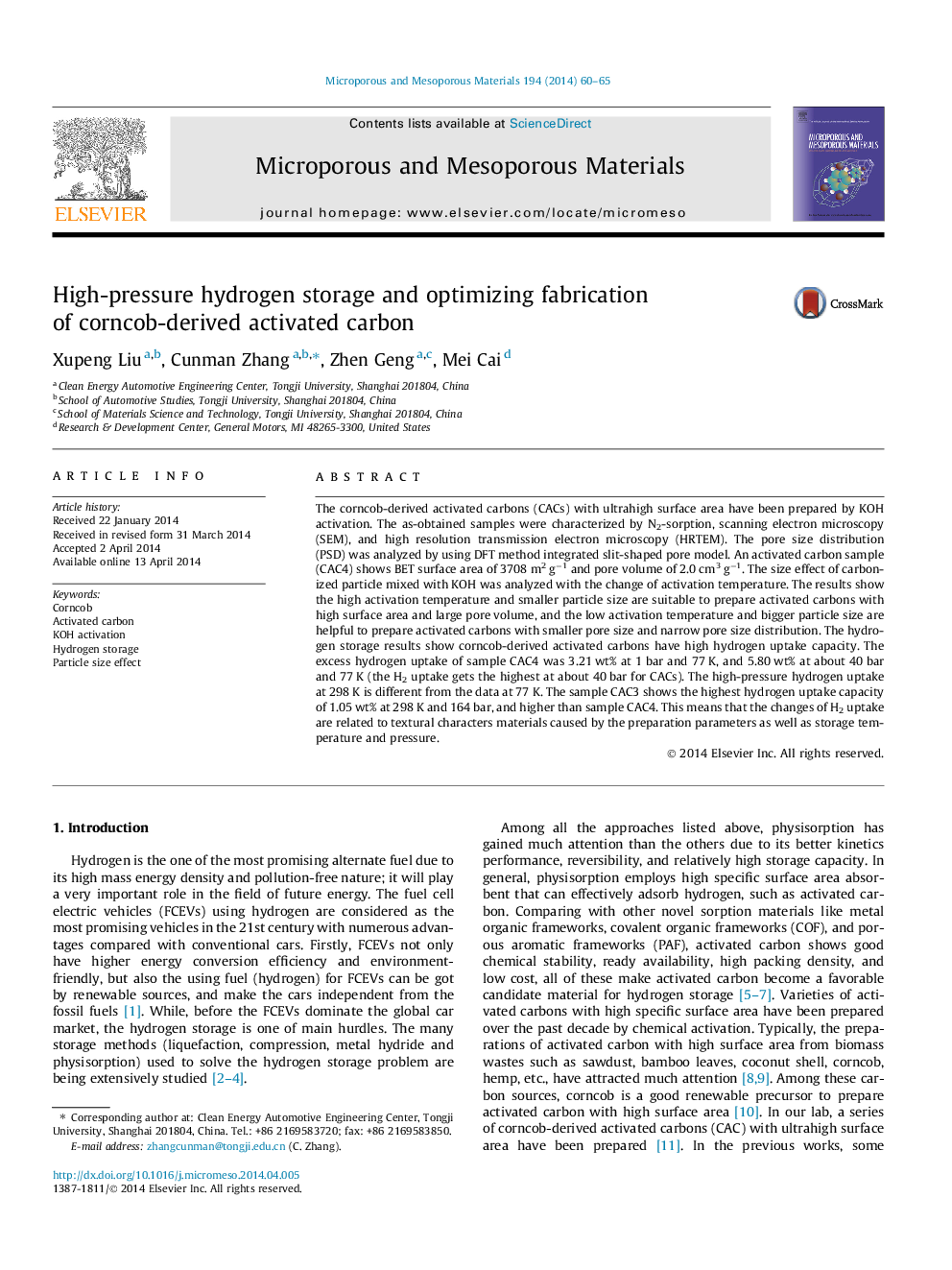| کد مقاله | کد نشریه | سال انتشار | مقاله انگلیسی | نسخه تمام متن |
|---|---|---|---|---|
| 73066 | 49043 | 2014 | 6 صفحه PDF | دانلود رایگان |
• The activated carbon (AC) with surface area of 3708 m2 g−1 was prepared from corncob.
• The particle size is a key factor to affect morphologies and porous structure.
• The AC with smaller pore size showed H2 uptake exceeding 3.21 wt% at 77 K, 1.0 bar.
• The micropore volume is more important than other parameters for H2 uptakes at 77 K.
• The AC with higher surface area show H2 uptake exceeding 5.80 wt% at 77 K, 40 bar.
The corncob-derived activated carbons (CACs) with ultrahigh surface area have been prepared by KOH activation. The as-obtained samples were characterized by N2-sorption, scanning electron microscopy (SEM), and high resolution transmission electron microscopy (HRTEM). The pore size distribution (PSD) was analyzed by using DFT method integrated slit-shaped pore model. An activated carbon sample (CAC4) shows BET surface area of 3708 m2 g−1 and pore volume of 2.0 cm3 g−1. The size effect of carbonized particle mixed with KOH was analyzed with the change of activation temperature. The results show the high activation temperature and smaller particle size are suitable to prepare activated carbons with high surface area and large pore volume, and the low activation temperature and bigger particle size are helpful to prepare activated carbons with smaller pore size and narrow pore size distribution. The hydrogen storage results show corncob-derived activated carbons have high hydrogen uptake capacity. The excess hydrogen uptake of sample CAC4 was 3.21 wt% at 1 bar and 77 K, and 5.80 wt% at about 40 bar and 77 K (the H2 uptake gets the highest at about 40 bar for CACs). The high-pressure hydrogen uptake at 298 K is different from the data at 77 K. The sample CAC3 shows the highest hydrogen uptake capacity of 1.05 wt% at 298 K and 164 bar, and higher than sample CAC4. This means that the changes of H2 uptake are related to textural characters materials caused by the preparation parameters as well as storage temperature and pressure.
Figure optionsDownload as PowerPoint slide
Journal: Microporous and Mesoporous Materials - Volume 194, August 2014, Pages 60–65
